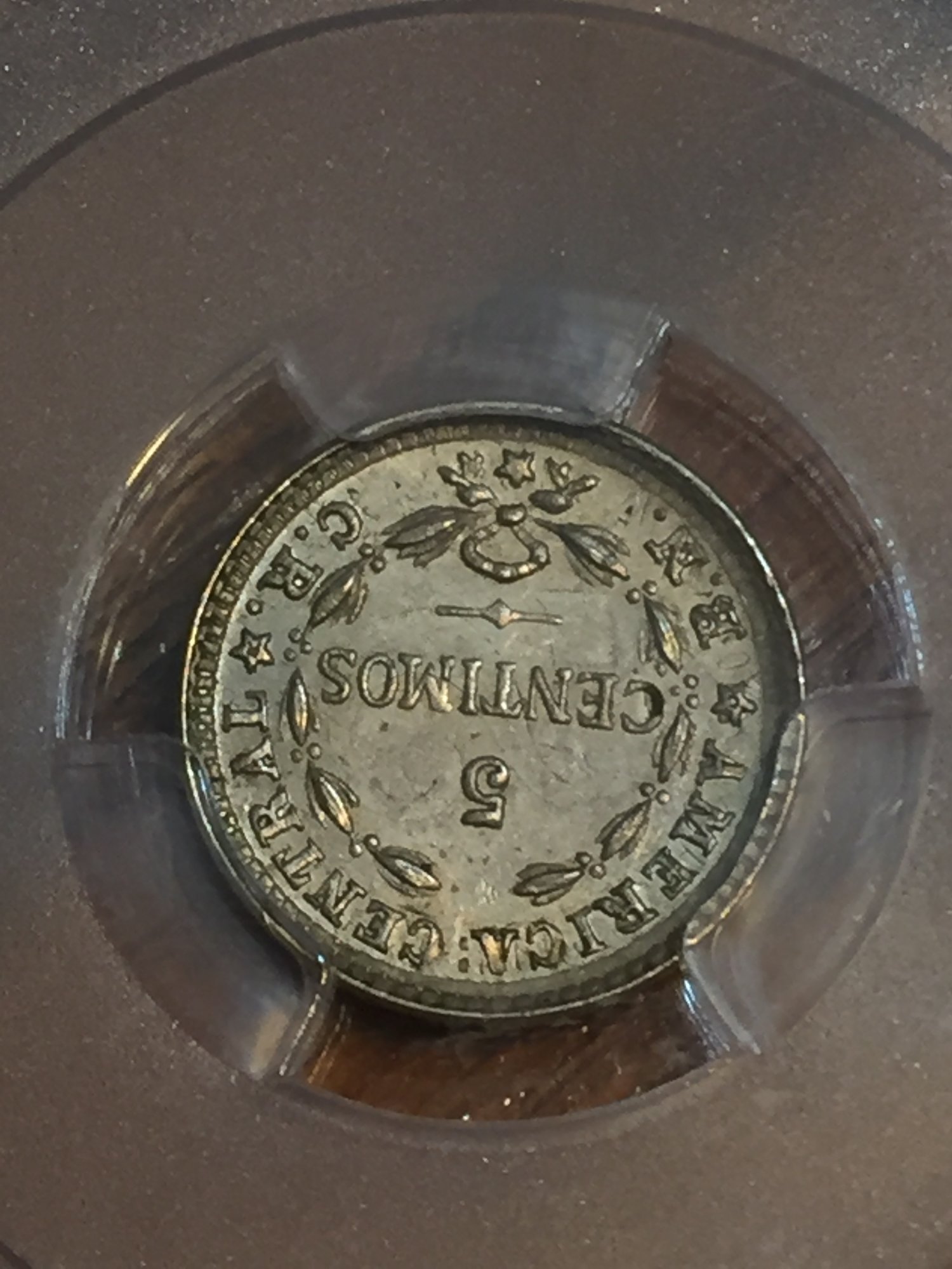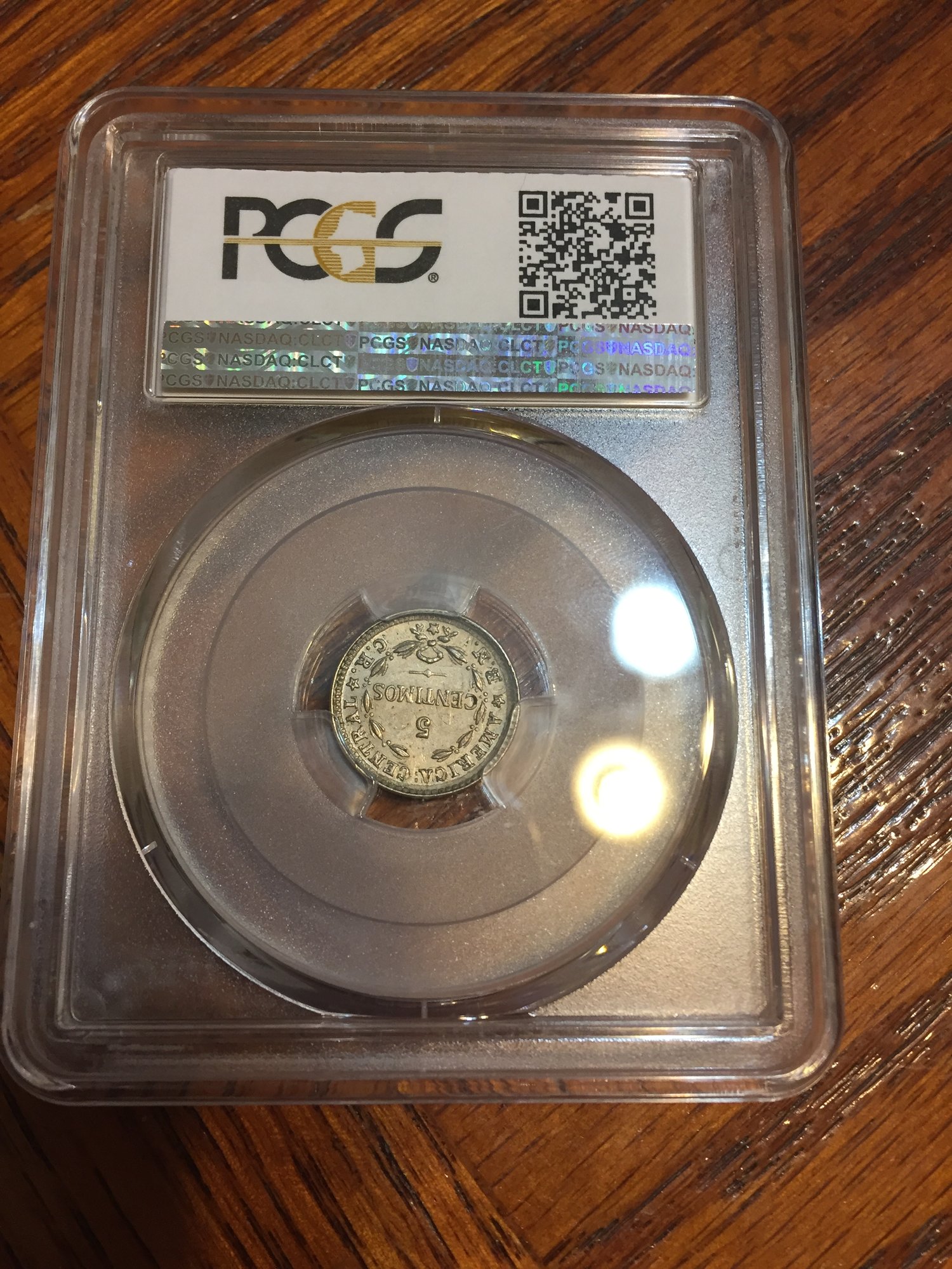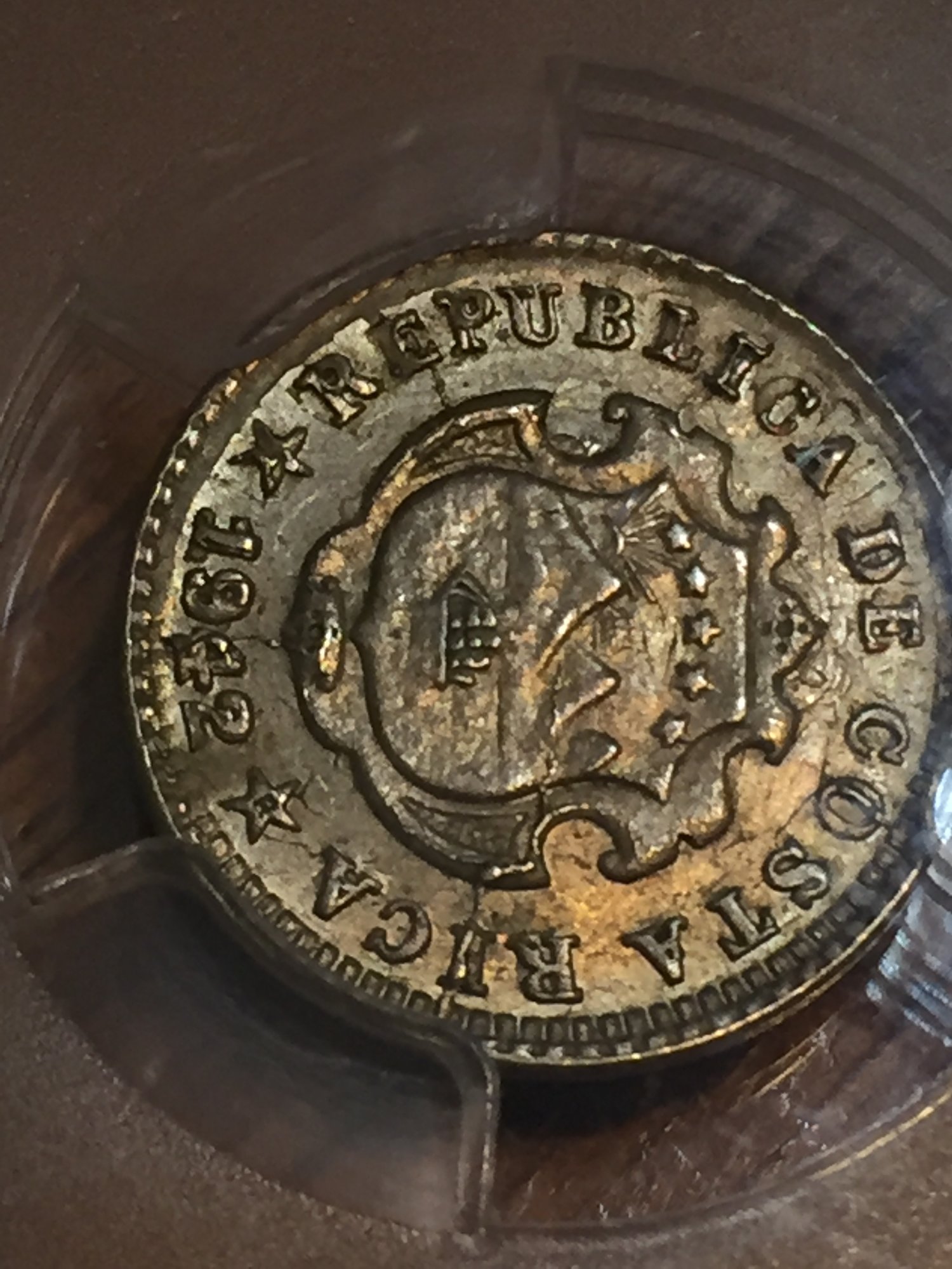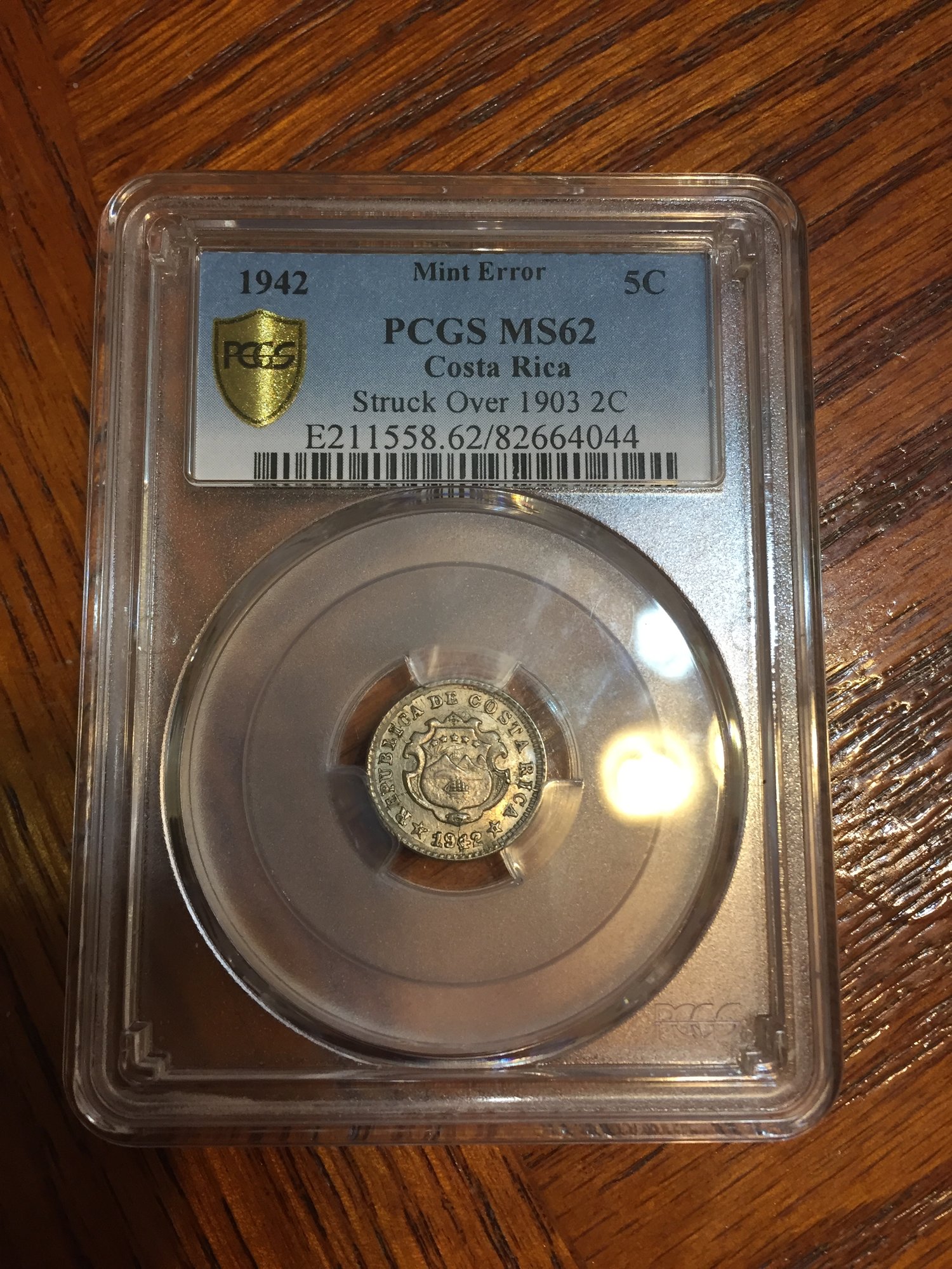Any Costa Rica collectors? KM 178
Discuss the why or how of the intentional overstrike of the 1942 5 centimos on the 1903 2 cetimos. KM 178.





WTB... errors, New Orleans gold, and circulated 20th key date coins!
0
Discuss the why or how of the intentional overstrike of the 1942 5 centimos on the 1903 2 cetimos. KM 178.





Comments
I don't think it is a mint error. I have Foreign Coins Struck at United States Mints by Altz and Barton and they indicate this was a revaluation. 274,342 coins of the original 630,000 mintage of the CuNi 1903 2 centimos were overstruck and revalued at 5 centimos in 1942. With this quantity of coins the overstriking was obviously intentional, so can this be a mint error? The original 1903 coins were struck at Philadelphia.
Costa Rica did the same earlier in 1923 revaluing silver 25 centimos at 50 centimos and silver 50 centimos at 1 Colon.
I do not know anything about the economic climate of 1920's or 1940's Costa Rica indicating why this would be done.
Jeff
Found this
minterrornews.com/news-5-13-03-foreigners_in_the_mint.html
I'm not intimately familiar with numismatics of Costa Rica. However, based on other occasions on which something similar took place it might be that a large quantity of 1903 pieces ended up in government coffers (whether by tax payments or remaining undistributed bank bags) and were a ready source of planchets when they needed to strike new, higher denomination coins.
And consider that the US Mints were so short of nickel in 1942 that they started making five cent pieces in silver. If CR wanted nickel coins, they would need to provide the raw material.
Doggedly collecting coins of the Central American Republic.
Visit the Society of US Pattern Collectors at USPatterns.com.
.
Doggedly collecting coins of the Central American Republic.
Visit the Society of US Pattern Collectors at USPatterns.com.
.
Doggedly collecting coins of the Central American Republic.
Visit the Society of US Pattern Collectors at USPatterns.com.
economical, and earth friendly.